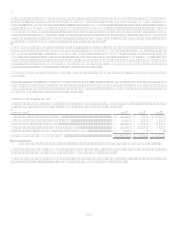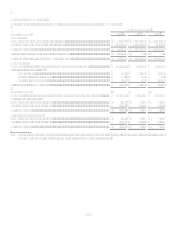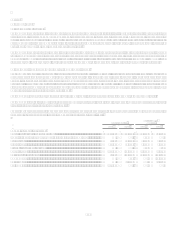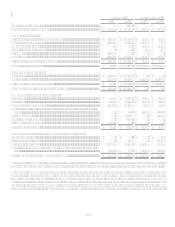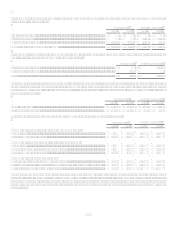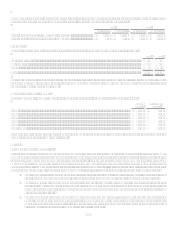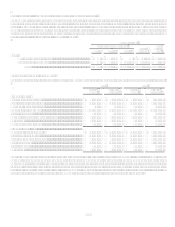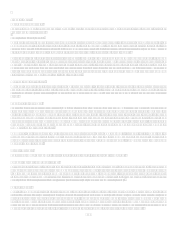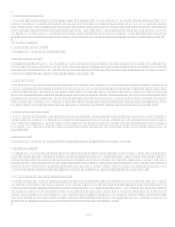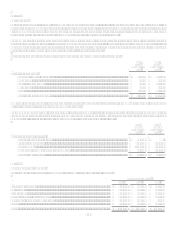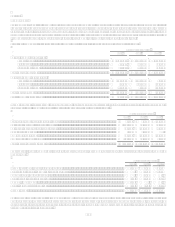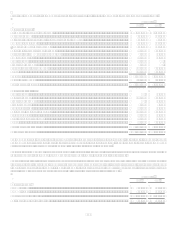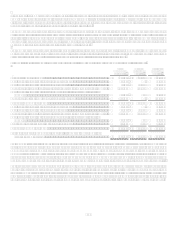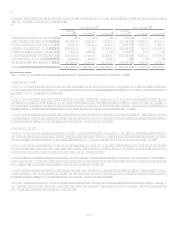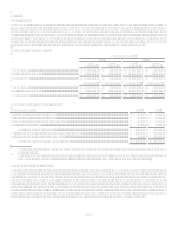Capital One 2008 Annual Report Download - page 148
Download and view the complete annual report
Please find page 148 of the 2008 Capital One annual report below. You can navigate through the pages in the report by either clicking on the pages listed below, or by using the keyword search tool below to find specific information within the annual report.130
Mortgage servicing rights
MSRs do not trade in an active market with readily observable prices. Accordingly, the Company determines the fair value of MSRs
using a valuation model that calculates the present value of estimated future net servicing income. The model incorporates
assumptions that market participants use in estimating future net servicing income, including estimates of prepayment spreads,
discount rate, cost to service, contractual servicing fee income, ancillary income and late fees. Since the adoption of SFAS 156 in
2007, the Company records MSRs at fair value on a recurring basis. Fair value measurements of MSRs use significant unobservable
inputs and, accordingly, are classified as Level 3. The valuation technique for these securities is discussed in more detail in Note 13.
Financial Liabilities
Non-interest bearing deposits
The carrying amount approximates fair value.
Interest bearing deposits
The fair values of savings, NOW accounts and money market accounts were the amounts payable on demand at December 31, 2008
and 2007, and therefore carrying value approximates fair value. The fair value of other interest-bearing deposits, including retail,
brokered, and institutional CDs, was calculated by discounting the future cash flows using discount rates based on the expected
current market rates for similar products with similar remaining terms.
Other borrowings
The carrying amount of federal funds purchased and resale agreements, FHLB advances, and other short-term borrowings
approximates fair value. The fair value of secured borrowings was measured using the trade price for bonds that have traded recently.
For others, trade information for bonds with similar duration and credit qualify was used, with adjustments based on relevant credit
information of the issuer. The fair value of junior subordinated debentures was estimated using the same methodology as described for
senior and subordinated notes below. The decreases in fair value of the secured borrowings and the junior subordinated debentures
below carrying amounts at December 31, 2008 are primarily due to significant interest rate spreads in the auto securitization market
experienced in 2008 and the significant discounts in secondary trading activity seen in junior subordinated debentures in 2008.
Senior and subordinated notes
The Company engages a third party pricing service in order to estimate the fair value of senior and subordinated notes. The pricing
service utilizes a pricing model that incorporates available trade, bid and other market information. It also incorporates spread
assumptions, volatility assumptions and relevant credit information into the pricing models. The decrease in fair value below carrying
amount at December 31, 2008 is primarily due to an increase in credit spreads across the industry only partially offset by lower
interest rates.
Interest payable
The carrying amount approximates the fair value of this liability due to its relatively short-term nature.
Derivative Liabilities
Most of the Companys derivatives are not exchange traded but instead traded in over the counter markets where quoted market prices
are not readily available. The fair value of those derivatives is derived using models that use primarily market observable inputs, such
as interest rate yield curves, credit curves, option volatility and currency rates. Any derivative fair value measurements using
significant assumptions that are unobservable are classified as Level 3, which include interest rate swaps whose remaining terms
extend beyond market observable interest rate yield curves. The impact of Capital Ones non performance risk is considered when
measuring the fair value of derivative liabilities. These derivatives are included in other liabilities on the balance sheet.
Commitments to extend credit and letters of credit
These financial instruments generally are not sold or traded. The fair value of the financial guarantees outstanding at December 31,
2008 that have been issued since January 1, 2003, was $3.5 million and was included in other liabilities. The estimated fair values of
extensions of credit and letters of credit are not readily available. However, the fair value of commitments to extend credit and letters
of credit is based on fees currently charged to enter into similar agreements with comparable credit risks and the current
creditworthiness of the counterparties. Commitments to extend credit issued by the Company are generally short-term in nature and, if
drawn upon, are issued under current market terms and conditions for credits with comparable risks. At December 31, 2008 and 2007,
there was no material unrealized appreciation or depreciation on these financial instruments.


